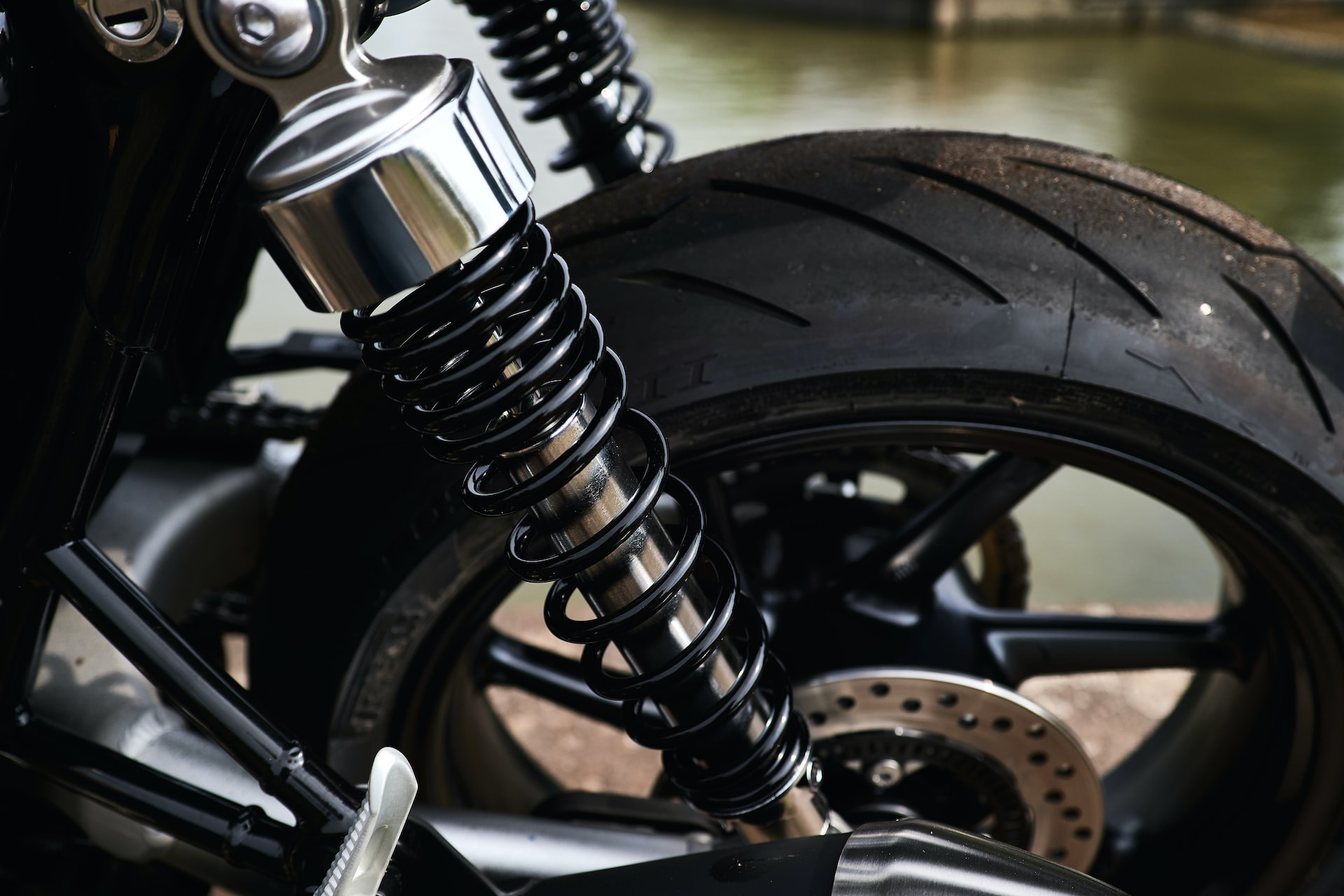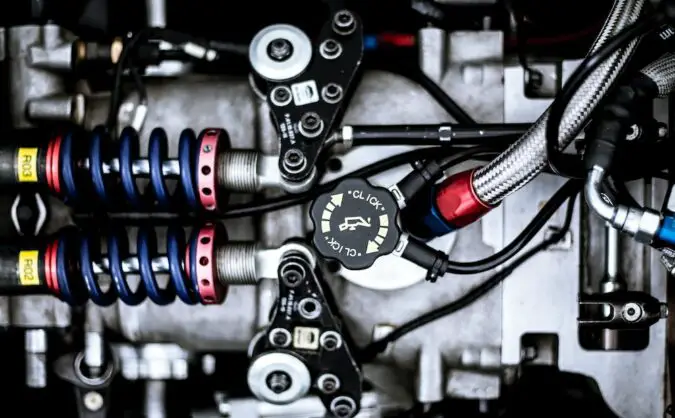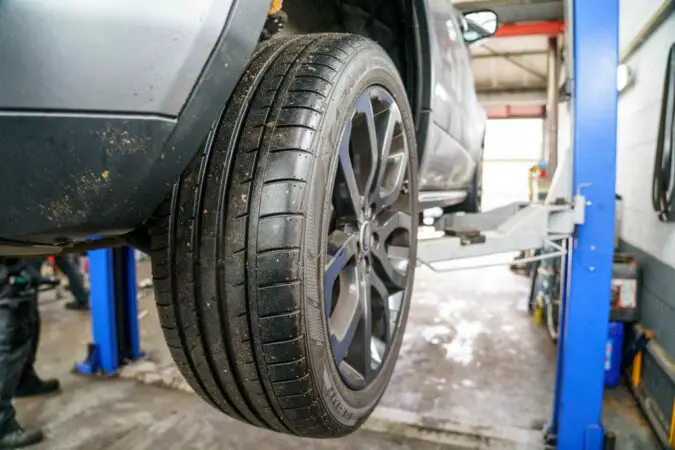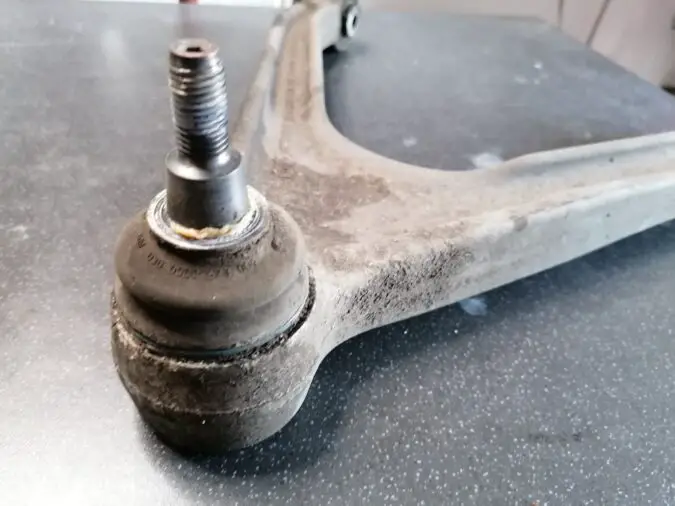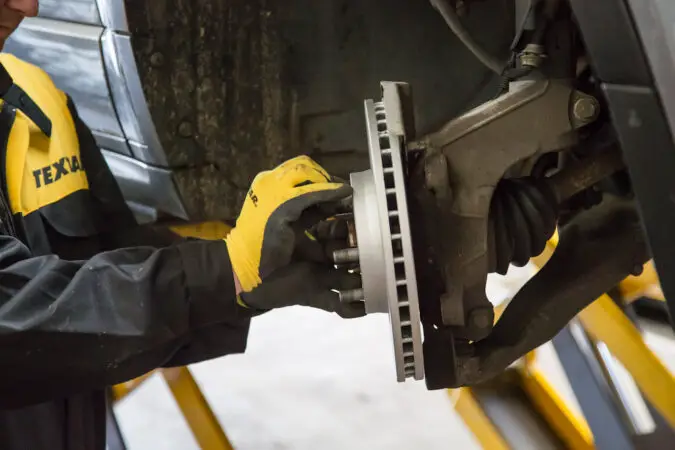After the engine and transmission, the suspension is another critical system in any vehicle. And much like the other systems we mentioned, the suspension is also made up of several different components. The shock absorbers, bearings, ball joints, and linkages just to name a few. The coil springs are another important part of the suspension, and over time, these can go bad and cause an array of issues. That is why it is important for any vehicle owner to have an idea about the coil spring replacement cost.
When any part of the suspension system develops an issue, it greatly affects the handling characteristics of the vehicle. Additionally, it can also affect tire wear and fuel economy as well.
That is why it is important to always keep the suspension system in great shape. In this article, we will also tell you about the various other running costs associated with the suspension, on top of discussing the coil springs.
Coil Spring
Before diving into the coil spring replacement cost, it is important for you to understand what coil springs are as well as their functionality. Not every road surface is perfect, so there should be some mechanism to absorb the bumps along the way in order to give the passengers a comfortable ride.
This is where the suspension system, specifically its coil springs comes in. Most modern vehicles come with coil springs in the suspension, as it is an efficient yet cost-effective way of giving the passengers a comfortable ride.
The coil springs hold up the entire weight of the vehicle and allow the wheels to move up or down independently of the body when they come across obstacles. This smoothens the ride by a noticeable amount.
Coil springs are typically made of steel in the shape of a spiral. The robust construction is what allows it to stretch or compress with the movement of the wheel. The two ends of the coil springs are attached to the spring perch at the top and the lower control arm at the bottom. This strategic location enhances its impact on increasing passenger comfort.
Due to the constant movement, coil springs get damaged and wear out over time. Although you can drive the vehicle in this conduction, you’ll feel a significant degradation in the ride quality. Moreover, the vehicle’s handling characteristics will also be worse than before. Damaged coil springs significantly increase the risk of rollovers as well.
So, replacing bad coil springs before they start causing significant damage should be at the top of your priority list, and knowing the coil spring replacement cost will come in handy in this situation.
Front Strut Replacement Cost
Similar to the coil springs, the front struts are another important component of a vehicle’s suspension system. Supporting the front axle and allowing it to move with ease are the two main responsibilities of the front struts.
In addition, the struts add to the safety of the vehicle by keeping the tires in contact with the ground at all times. You can easily identify these components if you take a look under the wheel wells. They are in the form of long metallic rods and have springs on either side for additional support.
As a gearhead, you would have surely heard people talk about “Macpherson struts.” Now, let’s take a brief look at what these are.
Macpherson Struts
These are one of the most popular and widely used struts currently out on market. They have a unique design that places a steering rod and an integrated shock absorber behind each of the four wheels. These components are connected by a coil spring that absorbs impacts from rough terrain.
Older vehicles came with separate systems for controlling steering and suspension vibration dampening. However, with the use of Macpherson struts, both these functionalities have been combined into a single component.
Similar to coil springs, front struts go bad over time as well. Here are some symptoms you can use to identify whether the ones on your vehicle have gone bad.
- Excessive Tire Wear
- Hydraulic Leaks
- Noises From The Struts
- Rough Ride
- Worse Braking Performance
1. Excessive Tire Wear
When the front struts wear out, it can lead to the tires losing contact with the road. The vehicle will bounce when driving down the road, leading to what people call “tire cupping.” Cupping refers to when high and low spots are formed on the tire tread.
When this happens, tires won’t grip the road like before, increasing the risk of accidents. In addition to tire wear, bad front struts can cause your vehicle to have alignment issues as well.
2. Hydraulic Leaks
Leaking hydraulics is another main symptom that indicates that the front struts have gone bad. Hydraulic fluid is housed inside the struts, which is used for dampening impacts as well as to maintain the cornering performance of the vehicle.
When the seals of these struts go bad, the fluid can leak and escape. The easiest way to identify front strut hydraulic leaks is by looking for oily residue buildup.
3. Noises From The Struts
If you hear low-pitched banging or thudding noises when going over bumps on the road, you’ll have to replace your front struts. The strut mount can also go bad due to corrosion and rust. This causes the mounts to loosen or warp, and as time passes, you’ll start to hear creaking noises when turning the steering wheel.
4. Rough Ride
As we mentioned earlier, the struts are an important part of the suspension system. So, when they go bad, you will definitely feel that the ride quality of your vehicle has worsened in a significant way.
You see, when the struts go bad, they are unable to properly control the movements of the suspension springs. In return, the vehicle will start to bounce up and down when going over even the smallest of obstacles.
5. Worse Braking Performance
Worn front struts affect the braking performance of vehicles as well. When the struts go bad, the springs cannot absorb enough energy to reduce the speed efficiently. If this happens, the vehicle will take much longer to come to a stop and you’ll also have to replace the brake pads more frequently.
As we are talking about the coil spring replacement cost, we think that it will be beneficial for you to know the costs associated with replacing the front struts as well. Typically, you should expect to pay in the neighborhood of $400 – $1200 for a front strut replacement. However, keep in mind that the price can vary depending on the make and model of the vehicle, as well as the strut manufacturer.
Replacing Suspension Cost
On some occasions, your vehicle might need more than one component of the suspension system to be replaced. This can be due to a plethora of reasons, including rust and accident damages.
There are some parts of the suspension system that are more prone to damage than others. These include,
- Shock Absorbers
- Suspension Arms
Now, we will take a look at the replacement costs associated with each of these components.
Replacing Suspension Cost #1 – Shock Absorbers
The shock absorbers – also called dampers by some people, function using a hydraulic piston system. Over time these systems develop fluid leaks, causing them to seize up. Usually, when a coil spring fails it is not repairable, and getting a replacement part fitted is essential.
Usually, replacement shock absorbers are shared as pairs, and they range in price between $60 to $200. However, with the addition of labor costs on top, the price will come in at around $200 – $300 per each side of the vehicle.
The cost of replacing the rear shock absorbers is usually lesser than that of the front ones. The rear suspension does not contain struts, so it is far easier to replace the rear shock absorbers. This is what leads to the lower repair cost. In contrast, you’ll have to replace the entire strut to take care of a bad front shock absorber.
Replacing Suspension Cost #2 – Suspension Arms
In order to replace the suspension arm, most components of the suspension system have to be taken off. As you might have guessed, this ends up costing a lot in labor costs. Although you can buy a suspension arm for around $70, when you add the labor costs on top the total replacement cost will be more like $400.
Cost Of Lowering A Car
The ride height of a car can have a huge effect on its visual appearance. Let’s be real, who wants a sportscar that sits high off the ground like an SUV? So, lowering the car can be a great way to give it some much-needed style. Furthermore, lowering a car gives some performance benefits as well.
Before discussing the cost of lowering a car, let’s take a look at some advantages and disadvantages of it.
Coil Spring Replacement Cost – Advantages Of Lowering A Car
Some advantages of lowering a car include,
- Improving The Appearance
- Weight Reduction
- Increased Traction
- Reducing Rollover Risk
Advantages Of Lowering A Car #1 – Improving The Appearance
This is perhaps the main reason most people lower their vehicles. Lowering a car makes it appear sleeker, and when paired with the right set of wheels, it will give your car an unmistakable look.
Advantages Of Lowering A Car #2 – Weight Reduction
Suspension components weigh a lot, so lowering them can be a great way to remove some of that weight from your vehicle. Additionally, lighter cars handle better and accelerate faster as well.
Advantages Of Lowering A Car #3 – Increased Traction
Lowering your vehicle lowers its center of gravity as well. If done properly using stiffer lowering springs and shocks, the reduced center of gravity can enhance the traction at each wheel, giving you some performance benefits in the process.
Advantages Of Lowering A Car #4 – Reducing Rollover Risk
When a vehicle sits high off the road, its center of gravity is higher as well. As a result, these vehicles have a higher risk of tipping off the road.
By lowering the ride height, the chance of rollovers is reduced significantly. It will also prevent the vehicle from leaning when taking corners as well.
Overall, lowering a car can be a great way to enhance the driving experience while simultaneously making the vehicle much safer.
Although these advantages might seem enticing, there are several disadvantages of lowering a vehicle too.
Coil Spring Replacement Cost – Disadvantages Of Lowering A Car
Several key disadvantages of lowering a car include,
- Harsh Ride
- Lowered Resale Value
- Difficulty In Controlling
- Risk Of Damage
Disadvantages Of Lowering A Car #1 – Harsh Ride
One of the main downsides of lowering a car is the impact it has on the ride quality. Lowering springs are stiffer, and as a result, they won’t absorb bumps as they used to before. Furthermore, tall people will find traveling in lowered vehicles extra difficult and uncomfortable.
Disadvantages Of Lowering A Car #2 – Lowered Resale Value
You will have a harder time selling cars with a lowered ride height when compared to ones that don’t. This is due to the fact that most buyers prefer vehicles in their original condition.
Disadvantages Of Lowering A Car #3 – Difficulty In Controlling
If not performed properly, lowering the ride height will make controlling your vehicle difficult. Not only would this make driving more challenging for inexperienced drivers, but it would also require thousands of dollars to be spent on suspension components in order for the issue to be solved properly.
Disadvantages Of Lowering A Car #4 – Risk Of Damage
When a car is lowered, hitting potholes or other obstacles too hard carries the risk of causing serious damage to the underbody of the car. This is due to the fact that after being lowered, the vehicle sits much closer to the ground. Some damages that can be caused due to lowering a car include dislodging the muffler, increased tire wear, and frame damage.
If you decide to go ahead with lowering your car after weighing the advantages with the disadvantages, you would be interested to know the costs associated with it as well. The cost of lowering depends on how low you decide to go, the place you choose for it as well as the parts you go for. Generally, lowering a car by up to 2 inches can cost between $100 – $5000.
Bad Coil Spring Symptoms
There are several symptoms that you can use to identify whether your coil springs have gone bad or not. And if you notice one or more of these symptoms with your vehicle, you’ll have to start worrying about the coil spring replacement cost. Some of the most common bad coil spring symptoms include,
- Sagging Of A Corner
- Bouncing
- Rattling Noises From The Suspension
- Noises When Turning
- Uneven Tread Wear
- Warning Light On The Dashboard
Coil Spring Replacement Cost #1 – Sagging Of A Corner
Sagging is one of the most noticeable bad coil spring symptoms. If you notice that one corner of your vehicle is sagging, it is mainly because the coil spring on that side has gone bad. Because the coil spring is unable to support the weight of the vehicle, that corner will sag down and sit lower than the others.
In addition to looking bad, sagging also affects the driving characteristics of the vehicle as well. If your vehicle is suffering from this issue, we recommend you get it fixed as soon as possible.
Coil Spring Replacement Cost #2 – Bouncing
One of the main functions of coil springs is to prevent the vehicle from bouncing when traveling down the road. However, when they go bad, the springs cannot contain the bounciness.
Furthermore, the issue will get worse far sooner if you spend most of your time driving on uneven or dirt roads. On severe occasions, the bouncing can make drivers lose control of their vehicles, leaving their lives in danger.
Coil Spring Replacement Cost #3 – Rattling Noises From The Suspension
Unusual rattling or clunking noises are other indications of bad coil springs. The noises will be hard to hear at first, but they will start to get louder and louder as time goes on. These rattling noises should not be ignored, and you should have a mechanic go through your vehicle and inspect the coil springs before things get out of hand.
Coil Spring Replacement Cost #4 – Uneven Tread Wear
Similar to faulty front struts, bad coil springs result in uneven tread wear as well. When a coil spring develops a fault, it affects the contact between the road and the tire attached to it. Subsequently, this will cause that specific tire to have a wear pattern uneven to the other three tires. You will also have to replace tires more frequently if you are suffering from coil spring issues.
Coil Spring Replacement Cost #5 – Warning Light On The Dashboard
Most modern vehicles come equipped with traction control, which is an important safety system. You can learn more about this in our guide on what’s traction control on a car. This system uses several sensors to keep track of the vehicle’s stability, and when it detects something unusual, the traction control light on the dashboard will turn on.
If this light has turned on in your dashboard as well (or the service traction control light – check out our guide on what does service traction control mean to learn more), we recommend you go through the coil springs on all corners to check for any issues.
Coil Spring Replacement Cost
The cost of replacing the coil springs depends on several factors. These include the make and model of your vehicle as well as your location. On average, the cost of a coil spring replacement ranges from $350 to $420.
However, one of the best ways to save some money on a coil spring replacement is by doing the work yourself. By doing the replacement this way, you will save the money that would otherwise be spent on labor.
A DIY coil spring replacement will cost around $70 – $170. However, you’ll require some tools to get the work done properly. Some tools that we recommend you to have for a coil spring replacement are,
- A Crowbar
- Coil Spring Compressor
- Car Jack
- Jack Stand
- Ball Joint remover
Using these tools, you’ll be able to successfully complete the coil spring replacement process in the comfort of your home. Once you carry out the replacement, make sure to take care of your suspension system. Otherwise, you’ll have to spend money on another coil spring replacement in the near future.
Coil Spring Replacement Cost: In Conclusion…
The coil springs ensure that passengers have a comfortable and enjoyable ride onboard their vehicles. However, like every mechanical component, the coil springs will also wear out over time and need to be replaced.
You can either have a professional replace the coil springs for around $350 or save some money by doing a DIY repair. Next time you go for a drive, keep an eye out for the bad coil spring symptoms we discussed, and if you have them, get the issue sorted as soon as possible.
FAQs On Coil Spring Replacement Cost
How Much Does It Cost To Replace A Strut
The cost of a strut replacement depends on the make and model of your vehicle. Typically, the replacement cost ranges between $150 – $450, and it will take a few hours for the repair to be completed.
How Much To Replace Shocks
Much of the costs associated with shock absorber replacement fall on labor costs. Although the shocks only cost about $100, the labor costs to install them can exceed $300.
How Much Does Suspension Cost
The suspension is one of the most critical systems in any vehicle, and it is one of the most expensive to repair as well. Depending on the vehicle and the complexity of the repair, a suspension replacement can cost between $1000 to $5000.
How Much Does It Cost To Fix Suspension
The suspension system is composed of many parts, and the replacement cost differs between each of them. For example, the general cost of a shock absorber replacement is about $300, while it takes around $150 to replace the struts. Additionally, the labor costs associated will also vary depending on the component.
How Long Do Coilovers Last
Although it is true that coilovers have many performance benefits, they are not as durable as traditional suspension setups. We recommend you evaluate the condition of the coilovers every 30,000 miles. Regularly cleaning road debris and salt off of the coilovers is a great way to extend their lifespan.

